Analyzing Intel Core M Performance: How 5Y10 can beat 5Y71 & the OEMs' Dilemma
by Brett Howse & Ian Cutress on April 8, 2015 8:00 AM ESTTouchXPRT 2014 Results
TouchXPRT performs several tasks, and the workloads very much fall into the race to sleep category. There are several workloads, from adding filters to photos, to creating podcasts. The benchmark takes about ten minutes to complete, but each workload is slightly different.
Looking at the Core i5 graph makes it very obvious where the heaviest lifting is in this benchmark, but even that one is full of bursts of work. The Dell Venue tablet is able to hit a very high frequency for many of these tasks, since it has adequate time to cool off in between. The ASUS is as consistent as always, and the Yoga 3 Pro can really stretch its legs on this benchmark.
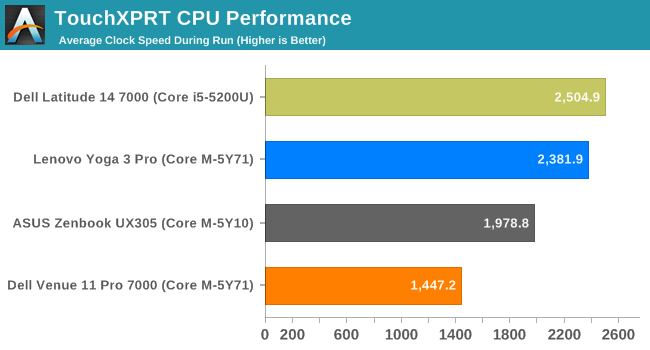
Looking at the average CPU frequency, the Yoga 3 Pro beats out the other Core M devices by a lot, and even turbo higher than the Core i5 on many occasions. If the work is short, the higher burst frequency of the 5Y71 can make a big difference. This would be very similar to web browsing, where short bursts of work get the job done. The Dell has the lowest average CPU frequency again, but as we have seen in previous results the fact that it can hit a much higher frequency than the ASUS can help it regain ground, especially on a short workload such as this one.
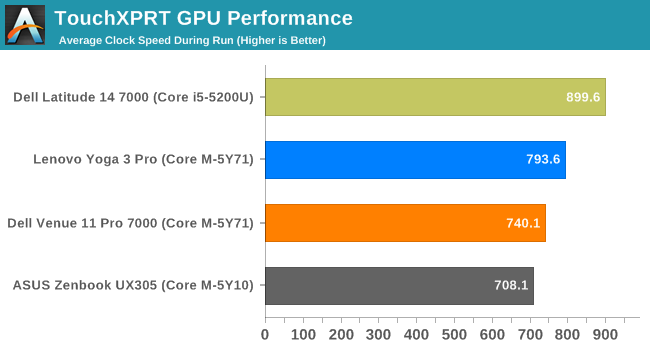
The GPU average frequencies show the disadvantage of the 5Y10. It is quite a bit under the 800 MHz turbo frequency of the chip, and it cannot turbo to the 900 MHz of the other two chips when it does have thermal headroom to make up the difference. The other two devices can be seen to jump all the way up to the 900 MHz maximum many times.

Temperatures are low, and the ASUS is the lowest again. The Yoga 3 Pro is sitting right at the 65°C target temperature, which means it was not always able to keep within that target during these quick bursts of energy needed.
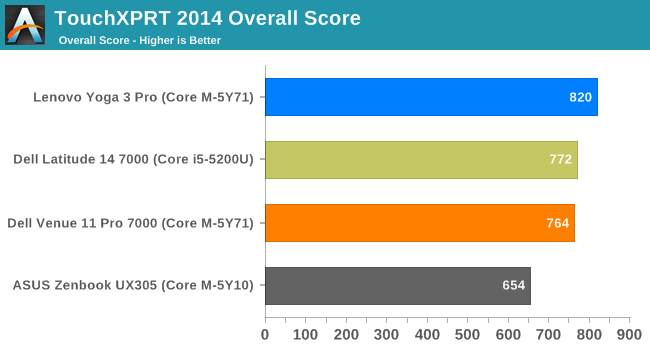
TouchXPRT is almost a perfect workload for 5Y71, and the Yoga 3 Pro outperforms even the Core i5-5200U in this test. The Venue 11 Pro also comes in right at the score of the Core i5. The ASUS UX305 is certainly hampered by its lack of turbo compared to the other devices in this test. It had the lowest average temperature, and it could not do anything with it.



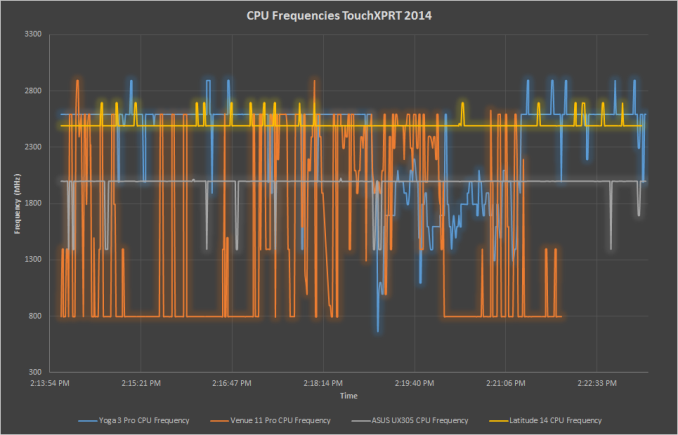
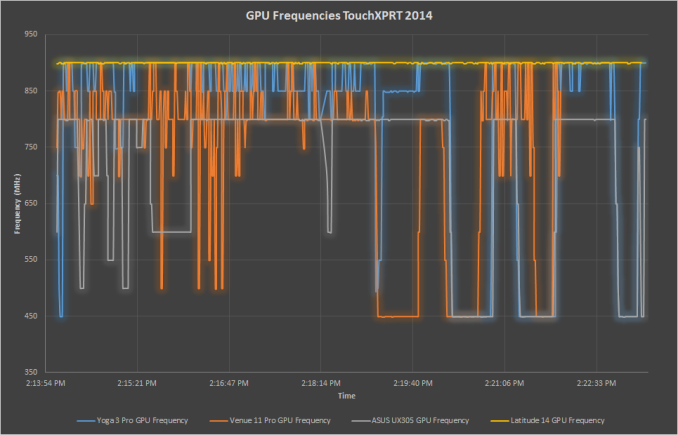
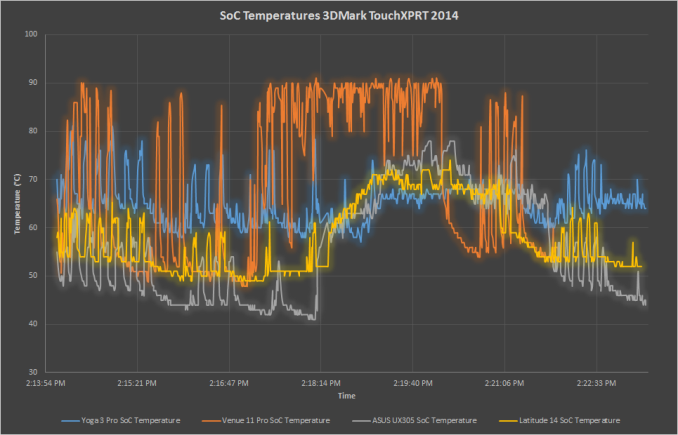








110 Comments
View All Comments
jjj - Wednesday, April 8, 2015 - link
You insist on only showing low power CPU results , because putting them properly in context would hurt sales right? God forbid you include laptops....And today somehow you decided to fully ignore AMD too.
Maybe stop working for Intel and serve your readers instead.
MrSpadge - Wednesday, April 8, 2015 - link
Dude.. WTF?This is an evaluation of what Core M is and what this means for devices using it. It's neither a comparison to other device and CPU classes, nor a general recommendation of this product.
Michael Bay - Wednesday, April 8, 2015 - link
AMD just can`t afford a decent shill anymore.THIS is what they go these days.
xthetenth - Wednesday, April 8, 2015 - link
I guess it's easy to confuse discussions of architectural details for devices that have already been reviewed on this very site with articles comparing those devices to other similar devices when the preexisting reviews contain many of the very comparisons you want.Dorek - Wednesday, April 8, 2015 - link
"And today somehow you decided to fully ignore AMD too."Only because the market does.
Refuge - Wednesday, April 8, 2015 - link
This article was never about comparing the CPU's to AMD or anyone. It was about explaining why we are getting awkward results across the board on the performance of these low TDP Intel parts.Nothing to do with AMD, or even the specific OEM's products either, so much as their construction and heat dissipation performance, but it was only in an effort to further explain the varying results of these low TDP Intel chips.
Pissedoffyouth - Wednesday, April 8, 2015 - link
Haha how does a 4.5w CPU for a laptop have anything to do with a 65w+ desktop CPU?Allan_Hundeboll - Wednesday, April 8, 2015 - link
If he was working for intel he would have included amd's "lowpower" cpuname99 - Wednesday, April 8, 2015 - link
Yeah, it's ridiculous.Why isn't there also a comparison against a POWER8 --- that would DEMOLISH this silly little Broadwell-Y.
And they're going on about how great the power dissipation is? Compare it against an ARM M0 and look who has crazy low power dissipation then!
I demand that every future AnandTech review compare any CPU against every other other CPU in the known universe, no matter how irrelevant the comparison...
lilmoe - Wednesday, April 8, 2015 - link
That price tag makes this the most confusing and out-of-place processor from Intel... Microsoft proved that Haswell-U can power an ultra-thin x86 tablet, have mobile SoC comparable battery life, and price it comparably or even lower than Core M products. All that with the added benefit of better performance...OEMs can take advantage of lower pricing on some Broadwell-U processors, and install a better/thinner active cooling solution with the savings. So where does that put Core M other than "luxury" devices that have no need for "real" performance advantages?
Not for me, thanks... Not at THAT price tag.